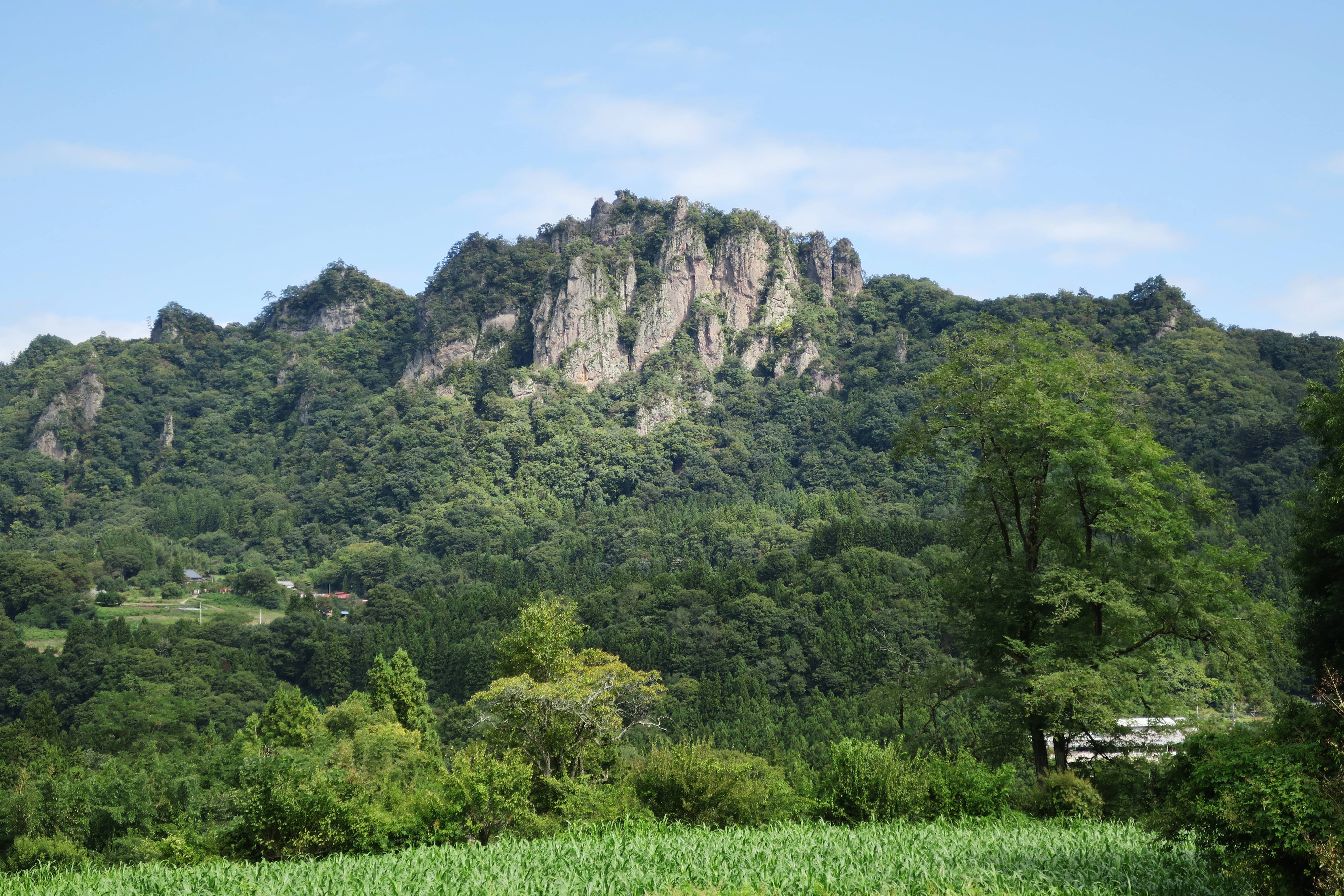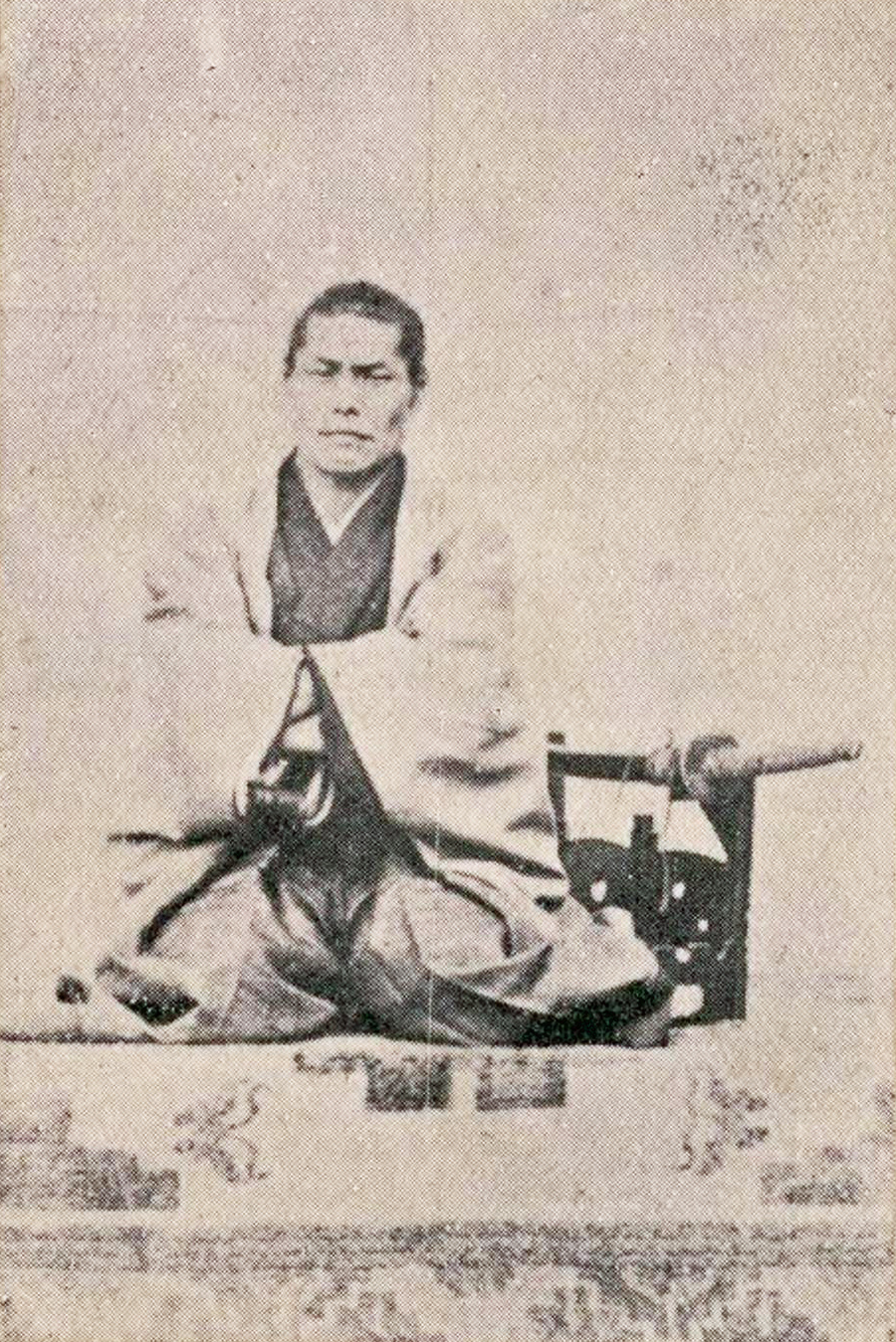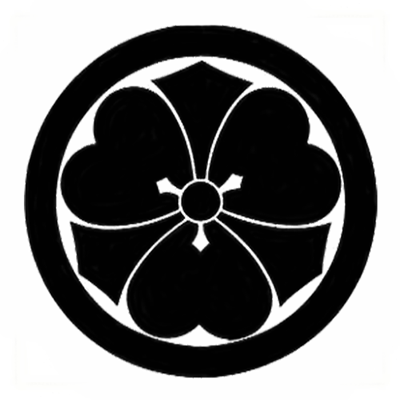|
Tetsurō Sagawa
was a Japanese actor and voice actor from Tateyama, Chiba. He was a graduate of Waseda University. Filmography Film *'' Dai Ninjutsu Eiga: Watari'' (Nagato Fujibayashi) *''Fūrinkazan'' ( Nobutomo Akiyama) *'' Onmitsu Dōshin Ōedo Sōsamō'' (Jūzō Isaka) Television drama *'' Haru no Sakamichi'' (xxxx) ( Kiyomasa Katō) *'' Kashin'' (xxxx) ( Shōichirō Shiraishi) *'' Kitaro ga Mita Gyokusai - Mizuki Shigeru no Senso'' (xxxx) (Brigadier) *'' Meiji no Gunzō: Umi ni Karin wo'' (xxxx) (Tarō Katsura) *'' Ryōran Genroku'' (xxxx) ( Tadakiyo Sakai) *'' Sangokushi Jirochō'' (xxxx) (Taisei) *'' Sanshimai'' (xxxx) ( Isami Kondō) *''Ultraman Ace'' (1972–73) (Captain Goro Ryu) *''Tokugawa Ieyasu'' (1983) ( Toshiie Maeda) *''Sanada Taiheiki'' (1985–86) ( Tadayo Sakai) Variety programs *''Waratte Iitomo'' '' Telephone Shocking'' (March 6, 1986) Television animation *''Alexander Senki'' (Plato) *'' Sangokushi'' (Guan Yu) *'' Sangokushi II: Amakakeru Otokotachi'' (Guan Yu) OVA *' ... [...More Info...] [...Related Items...] OR: [Wikipedia] [Google] [Baidu] |
Brackets
A bracket is either of two tall fore- or back-facing punctuation marks commonly used to isolate a segment of text or data from its surroundings. Typically deployed in symmetric pairs, an individual bracket may be identified as a 'left' or 'right' bracket or, alternatively, an "opening bracket" or "closing bracket", respectively, depending on the Writing system#Directionality, directionality of the context. Specific forms of the mark include parentheses (also called "rounded brackets"), square brackets, curly brackets (also called 'braces'), and angle brackets (also called 'chevrons'), as well as various less common pairs of symbols. As well as signifying the overall class of punctuation, the word "bracket" is commonly used to refer to a specific form of bracket, which varies from region to region. In most English-speaking countries, an unqualified word "bracket" refers to the parenthesis (round bracket); in the United States, the square bracket. Glossary of mathematical sym ... [...More Info...] [...Related Items...] OR: [Wikipedia] [Google] [Baidu] |
Onward Towards Our Noble Deaths
is a one-shot manga written and illustrated by Shigeru Mizuki. In it, Mizuki describes his experiences as a soldier participating in the New Guinea campaign during World War II. He portrays the final weeks of his infantry service as the soldiers were instructed to die for their country to avoid the dishonor of survival. The manga was first published in Kodansha magazine ''Shūkan Gendai'' in 1973, based on Mizuki's work of 1970. After being translated and published by Drawn & Quarterly in 2011, ''Onward Towards Our Noble Deaths'' has been well received by English-speaking critics. It also received awards in France and in the United States, and was adapted into a television drama in 2007 by Japanese broadcaster NHK. Overview Shigeru Mizuki is a Japanese manga artist who is best known for his ''yōkai'' (Japanese folklore monsters)-themed manga, especially ''GeGeGe no Kitarō''. Mizuki enjoyed writing about the monsters' histories, which a local woman related to him; however in ... [...More Info...] [...Related Items...] OR: [Wikipedia] [Google] [Baidu] |
Waratte Iitomo
was a Japanese variety show aired every weekday on Fuji TV. The show was hosted by Tamori (Kazuyoshi Morita) and ran from 1982 to 2014. The show was produced in the Studio Alta building in Shinjuku, Tokyo. The show featured a series of regular members who only appeared on a particular day of the week. These regular members were changed periodically. In October 2011, Johnny's Jr. members Yuki Nozawa and Yuma Sanada, known together as the "Noon Boyz", joined as the show's 16th "Iitomo Seinentai" team of assistants and dancers. The final broadcast of the program took place on March 31, 2014 after thirty-two years on the air. Guests appearing on the program's daily "Telephone Shocking" interview segment during the final week included Tetsuko Kuroyanagi, Beat Takeshi, and Prime Minister Shinzō Abe. The show had 8,054 episodes, making it the highest episode count in Japan. Cast As well as the long-running presenter (Tamori) and "Noon Boyz", the show featured certain regular members ... [...More Info...] [...Related Items...] OR: [Wikipedia] [Google] [Baidu] |
Sakai Tadayo
was a Japanese ''daimyō'' of the Sengoku period, and high-ranking government advisor, holding the title of ''Rōjū'', and later ''Tairō''. The son of Sakai Shigetada, Tadayo was born in Nishio, Mikawa Province; his childhood name was Manchiyo. He became a trusted elder (''rōjū'') in Toyotomi Hideyoshi's government, alongside Tokugawa Ieyasu. Under Hideyoshi, he was made lord of Kawagoe Castle (in Musashi Province, today Saitama Prefecture) and later of Nagoya Castle in Kyūshū's Hizen Province. In 1600, in the lead-up to the decisive Sekigahara campaign, he fought against the Tokugawa at Aizu, and submitted to them at the siege of Ueda. Thus, having joined the Tokugawa prior to the battle of Sekigahara itself, Sakai was made a '' fudai daimyō'', and counted among the Tokugawa's more trusted retainers. He served under Ieyasu for a time, and under the second shōgun, Tokugawa Hidetada, as a ''hatamoto''. Sakai's father died in 1617, and so he inherited his father's domain ... [...More Info...] [...Related Items...] OR: [Wikipedia] [Google] [Baidu] |
Sanada Taiheiki
is a Japanese television jidaigeki or period drama that was broadcast on NHK in 1985–1986. It is based on Shōtarō Ikenami's novel Sanada Taiheiki. The drama focuses on the history of the Sanada clan during the late Sengoku period. The complete DVD box is available. Plot In 1582, Oda and Tokugawa allied forces started an invasion of Takeda`s Kai Province. so Takeda clan was in danger of extinction. Sanada Masayuki advised Takeda Katsuyori to abandon Kai Province and flee towards Masayuki`s Iwabitsu Castle. Katsuyori accepted his suggestion once but he changed his mind and tried to flee towards Oyamada Nobushige`s Iwadono Castle but was betrayed by Oyamada Nobushige and killed himself at Tenmokuzan. Lost the lord, the Sanada clan_unexpectedly_became_a_small_daimyo.html" ;"title="DF 56 of 80/nowiki>">DF 56 of 80">("Sa ... unexpectedly became a small daimyo">DF 56 of 80/nowiki>">DF 56 of 80">("Sa ... unexpectedly became a small daimyo. The Sanada clan seeks the way to survive. ... [...More Info...] [...Related Items...] OR: [Wikipedia] [Google] [Baidu] |
Maeda Toshiie
was one of the leading generals of Oda Nobunaga following the Sengoku period of the 16th century extending to the Azuchi–Momoyama period. His preferred weapon was a yari and he was known as "Yari no Mataza" (槍の又左), Matazaemon (又左衛門) being his common name. He was a member of the so-called Echizen Sanninshu (Echizen Triumvir) along with Sassa Narimasa and Fuwa Mitsuharu. The highest rank from the court that he received is the Great Counselor ''Dainagon'' ( 大納言). Early life His father was Maeda Toshimasa and his wife was Maeda Matsu. His childhood name was "Inuchiyo" (犬千代). Toshiie was born in the village of Arako (present-day Nakagawa-ku, Nagoya), He was the fourth of seven brothers, of Maeda Toshimasa, who held Arako Castle. Toshiie served Oda Nobunaga from childhood (first as a page) and his loyalty was rewarded by being allowed to be the head of the Maeda clan, very unusual for a fourth son with no apparent failures among his elder brothers. Jus ... [...More Info...] [...Related Items...] OR: [Wikipedia] [Google] [Baidu] |
Tokugawa Ieyasu (Taiga Drama)
is a 1983 Japanese television series. It is the 21st NHK ''taiga'' drama. The drama is based on the novel of the same name by Sōhachi Yamaoka. Plot The story chronicles the life of Tokugawa Ieyasu. Production Production Credits *Original – Souhachi Yamamoto *Music – Isao Tomita *Narrator – Naomitsu Tateno *Historical research – Keizō Suzuki *Sword fight arranger - Kunishirō Hayashi Cast Starring role * Sakae Takita as Tokugawa Ieyasu (episodes 7-50) **Yōji Matsuda as Teen Ieyasu (episode 6) **Yoshitaka Kase as Child Ieyasu (episodes 3-5) Tokugawa clan *Shinobu Otake as Odai no Kata - mother of Ieyasu *Masaomi Kondō as Matsudaira Hirotada - father of Ieyasu *Kaoru Yachigusa as Keyōin - grandmother of Ieyasu *Kimiko Ikegami as Lady Tsukiyama - wife of Ieyasu *Hiroshi Katsuno as Tokugawa Hidetada - third son of Ieyasu *Hiroyuki Nagato as Honda Sakuzaemon *Shinjirō Ehara as Ishikawa Kazumasa *Taketoshi Naito as Honda Masanobu *Yosuke Natsuki as Yagyū Munenori *H ... [...More Info...] [...Related Items...] OR: [Wikipedia] [Google] [Baidu] |
Ultraman Ace
is the 5th show in the Ultra Series. Produced by Tsuburaya Productions, the series aired on Tokyo Broadcasting System from April 8, 1972, to March 30, 1973, with a total of 52 episodes. Starting from this show, the Ultra Series begins to shift from a sci-fi/mystery adventure to superhero fantasy fare. All previous Ultramen (Ultraman, Ultraseven, Ultraman Jack, and Zoffy) make regular appearances in this series, whereas they only made guest appearances in the previous show ''The Return of Ultraman''. Plot From another dimension, Yapool orchestrated attacks on Earth using biological weapons called that surpassed ordinary monsters. The first Terrible-Monster Verokron managed to destroy a city and the that was dispatched to fight it. A pair of youths Seiji Hokuto and Yuko Minami lost their lives in protecting nearby civilians as the fifth Ultra from M78, Ultraman Ace fused with them. The pair were given each per person and transforms into Ace whenever they perform the . Ever sinc ... [...More Info...] [...Related Items...] OR: [Wikipedia] [Google] [Baidu] |
Kondō Isami
was a Japanese swordsman and official of the late Edo period. He was the fourth generation master of Tennen Rishin-ryū and was famed for his role as commander of the Shinsengumi. Background He was born Miyagawa Katsugorō to a farmer Miyagawa Hisajirō and his wife Miyo in Kami-Ishihara village in Musashi Province (present city of Chōfu, Tokyo, Chōfu) in Western Tokyo on November 9, 1834. He had two older brothers, Otojirō (音次郎; later known as Otogorō 音五郎) and Kumezō (粂蔵; later known as Sōbei 惣兵衛) and an older sister Rie (リエ), who died two years before he was born. Katsugorō began training at the Shieikan (the main dojo of the Tennen Rishin-ryū) in 1848. As a young man he was said to be an avid reader, and especially liked the stories of the ''Forty-seven rōnin'' and the ''Romance of the Three Kingdoms''. His renown as a scholar and his fame at having defeated a group of thieves who tried to break into his family home was great, and caught ... [...More Info...] [...Related Items...] OR: [Wikipedia] [Google] [Baidu] |
Sangokushi Jirochō
The ''Records or History of the Three Kingdoms'', also known by its Chinese name as the Sanguo Zhi, is a Chinese historical text which covers the history of the late Eastern Han dynasty (c. 184–220 AD) and the Three Kingdoms period (220–280 AD). It is widely regarded as the official and authoritative source historical text for that period. Written by Chen Shou in the third century, the work synthesizes the histories of the rival states of Cao Wei, Shu Han and Eastern Wu in the Three Kingdoms period into a single compiled text. The ''Records of the Three Kingdoms'' is the main source of influence for the 14th century historical novel ''Romance of the Three Kingdoms,'' considered one of the great four novels of Chinese classical literature. Major chunks of the records have been translated into English, but the tome has yet to be fully translated. Origin and structure The ''Records of the Grand Historian'', ''Book of Han'' and ''Book of the Later Han'', and the ''Records ... [...More Info...] [...Related Items...] OR: [Wikipedia] [Google] [Baidu] |
Sakai Tadakiyo
, also known as Uta-no-kami, Bodart-Bailey, Beatrice. (1999) ''Kaempfer's Japan: Tokugawa Culture Observed,'' p. 442./ref> was a ''daimyō'' (feudal lord) in Kōzuke Province, and a high-ranking government advisor and official in the Tokugawa shogunate of Japan. Sansom, George Bailey. (1963) ''A History of Japan: 1615-1867,'' pp. 54 The Sakai were identified as one of the '' fudai'' or insider ''daimyō'' clans which were hereditary vassals or allies of the Tokugawa clan,Alpert, Georges. (1888) ''Ancien Japon,'' pp. 76-77 in contrast with the '' tozama'' or outsider clans. Sakai clan genealogy Tadakiyo was part of the senior branch of the Sakai. The ''fudai'' Sakai clan originated in 14th century Mikawa Province.Appert p. 76 The Sakai claim descent from Minamoto Arichika. Arichika had two sons: one of them, Yasuchika, took the name Matsudaira; and the other son, Chikauji, took the name Sakai — and this samurai ancestor is the progenitor of this clan's name. Papinot, Edmond. ( ... [...More Info...] [...Related Items...] OR: [Wikipedia] [Google] [Baidu] |




